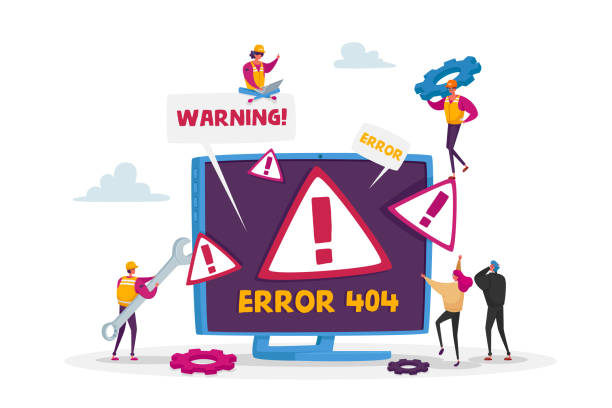
In the ever-evolving world of SEO, backlinks have emerged as a crucial factor for website success. These valuable links from external websites enhance your website’s credibility and play a vital role in boosting its visibility and organic rankings.
Backlinks play a crucial role in affirming the value and credibility of your content to search engines like Google. They serve as endorsements from other websites, signaling that your content is worthy of recognition and trust.
According to experts, link building is the third most crucial factor for SEO rankings, following content and keywords. The quantity and quality of your backlinks directly influence your ability to improve your rankings on the search engine results pages (SERPs).
In this blog, we aim to illuminate the ideal number of backlinks needed for successful link building. Understanding the factors influencing the ideal number of backlinks and implementing the proper techniques can propel your website’s growth and maximize its online presence.
So, let’s dive in and unravel the secrets of effective link building and discover the power of backlinks in driving your website’s success.
The Basics of Backlinks
Getting a good grasp on the fundamentals of backlinks is crucial in navigating link building. Put simply, backlinks originate from external websites and direct users to your site.
When reputable websites link to your content, search engines perceive your website as valuable and deserving of user recommendation. Consequently, search engines may reward your site with higher rankings in search results. By acquiring quality backlinks and optimizing their impact, you can enhance your website’s visibility, credibility, and overall SEO performance.
Let’s delve deeper into the secrets of effective link building and explore how to harness the power of backlinks to drive success.
1. Backlinks and Their Significance

Backlinks, alternatively referred to as inbound or incoming links, connect one webpage to another. They are vital for SEO, as they help boost a website’s visibility and authority, playing a crucial role in online success.
They contribute to the relevance and context of a webpage, enhancing its overall quality and value. The anchor text used in a backlink provides valuable information to search engines regarding the linked page’s content. When the anchor text aligns with the keywords and subject matter of the linked page, it strengthens the page’s relevance and contributes to its improved ranking for relevant search queries.
The lin is crucial and should not be overlooked. Search engines prioritize backlinks from authoritative and reputable websites. Low-quality or spammy backlinks can detrimentally affect a website’s SEO endeavors, exerting a negative impact.
2. Different Types of Backlinks
There exist two primary categories of backlinks: Dofollow and Nofollow.
Dofollow backlinks are regular links that search engines recognize and use to determine a website’s authority and ranking. These links pass on “link juice,” improving the linked page’s visibility in search results.
Nofollow backlinks contain an HTML attribute instructing search engines to refrain from following the link or passing on any authority. They are commonly used for user-generated content or when the website wants to distance itself from the linked page.
While dofollow backlinks directly impact SEO, nofollow backlinks can still generate traffic and increase brand visibility, even though they don’t contribute directly to search engine rankings. According to the uSERP State of Link Building, most SEO professionals, accounting for 54%, consider nofollow links to hold value in their backlink profile.
3. How do search engines perceive backlinks?

Search engines perceive backlinks as important indicators of a website’s credibility, authority, and relevance. During web crawling, search engines examine and analyze a website’s backlink profile to assess its overall reputation.
Firstly, search engines consider the number of backlinks a website receives. A higher number of backlinks suggests the website is popular and trusted by other online sources.
Secondly, search engines evaluate the anchor text used in backlinks. The anchor text provides contextual information about the linked page’s content.
Furthermore, search engines assess the diversity and naturalness of a website’s backlink profile. A diverse set of backlinks from various domains and sources indicates that the website has earned them organically, suggesting a higher level of trustworthiness.
Backlinks help search engines understand a website’s popularity, reputation, and subject matter expertise, influencing its visibility and position in SERPs.
4. Quality vs. Quantity: Debunking the Myth
Quality vs. quantity is an ongoing debate in the world of backlinks. While many believe that a higher number of backlinks leads to better SEO results, the reality is that the quality of backlinks plays a more significant role.
Within this section, we aim to debunk the misconception and explore why focusing on high-quality backlinks is essential for effective search engine optimization.
Understanding the Concept of Link Quality

The concept of link quality refers to assessing the value, relevance, and credibility of a backlink. Various factors, such as the linking domain’s authority and reputation, the link content’s relevance, and the linking patterns’ naturalness, determine link quality.
High-quality backlinks come from reputable websites that are considered authoritative by search engines. These links are relevant to the linked content, use appropriate anchor text, and are acquired through organic means. Link quality is a crucial aspect of SEO as search engines prioritize and give more weight to high-quality backlinks in their ranking algorithms.
The Influence of Authoritative and Relevant Backlinks
Authoritative and relevant backlinks have a significant influence on search engine rankings. When authoritative sources, like reputable and established websites, link to a website, it signals to search engines the reliability and quality of the content. This can lead to resulting in better visibility and higher search rankings.
Similarly, backlinks from relevant websites that are closely aligned with the content and topic of the linked page also carry weight. Such links reinforce the relevance and context of the content, enhancing its chances of ranking well for related search queries.
Why a few high-quality backlinks can be more beneficial than numerous low-quality ones?
A few high-quality backlinks can be more beneficial than numerous low-quality ones for several reasons. Let’s have a look at them:
- Firstly, high-quality backlinks often come from authoritative and reputable websites, which carry more weight in search engine algorithms. This can significantly improve a website’s credibility and visibility in search results.
- Secondly, high-quality backlinks are more likely to drive relevant referral traffic from users who are genuinely interested in the linked content. In contrast, low-quality backlinks may not attract valuable traffic and can harm a website’s reputation.
- Lastly, search engines prioritize quality over quantity, so a few authoritative backlinks can substantially impact search rankings more than many low-quality backlinks.
Factors Influencing the Optimal Number of Backlinks
The ideal quantity of backlinks for a website is influenced by several factors. It’s important to understand these factors to strike a balance between quantity and quality, ensuring a compelling backlink profile. Here are the key factors to consider:
- Authority of the Linking Domains: Backlinks from authoritative domains carry more weight and can substantially impact search engine rankings.
- Relevance of the Linking Domains: Aim to build a network of backlinks from websites that share similar themes or target similar audiences as your own.
- Natural Link Acquisition: Search engines prefer backlinks that are acquired naturally, meaning they are earned rather than manipulated or bought.
- Link Diversity: Having a variety of backlinks is beneficial. Strive to acquire various link types, including blogs, news sites, industry directories, and reputable publications. According to a survey, lin believe that maintaining a diverse range of backlinks is crucial for achieving SEO success.
- Competitor Analysis: Examining the backlink profiles of your competitors can offer valuable insights into the optimal number of backlinks.

- Website Size and Age: Newer or smaller websites may need to start with fewer backlinks (typically 10 to 20) and gradually build over time. Meanwhile, larger or established websites may be able to handle a higher number (often exceeding 50 or even reaching the hundreds).
- Link Velocity: Link velocity pertains to the speed or frequency at which backlinks are acquired within a specific timeframe. It is crucial to uphold a natural link velocity, gradually building backlinks rather than acquiring a large number quickly.
- Quality Over Quantity: As mentioned earlier, the quality of backlinks is more important than quantity. A few high-quality backlinks from authoritative sources can significantly impact SEO more than numerous low-quality backlinks.
So How Many Backlinks Do I need?
Remember, the optimal number of backlinks can vary for each website depending on its specific goals, industry, and competition.
Achieving competitiveness in SEO often entails having around 40 to 50 backlinks directing to a website’s homepage and between 0 to 100 backlinks per individual web page. Nevertheless, it’s important to consider various factors that can influence this range, including industry competition, the quality of backlinks, relevance to website content, and the overall SEO strategy employed.
Considering these factors allows businesses to customize their backlink acquisition and optimization, leading to improved online visibility and higher organic search rankings. Remember, a well-rounded SEO strategy considers both the quantity and quality of backlinks to drive effective results.
It is essential to analyze the website’s unique circumstances, evaluate the competition, and align the backlink strategy with the desired objectives to determine the appropriate number of backlinks needed for success.
By consistently monitoring and analyzing your backlink profile, you can gather valuable insights to make informed decisions regarding the optimal quantity of backlinks for your website.
Cost of Link Building Strategy
From the preceding paragraphs, you must have recognized the intricacy of constructing high-quality backlinks. Given the multitude of individuals securing authentic and organic links for your website, it is not an inexpensive service.
Outreach Crayon offers the following pricing for their link-building services:
|
Services |
Minimum Cost (Based on factors like DA/traffic etc.) |
Maximum Cost (Based on factors like DA/traffic etc.) |
|
Blogger Outreach |
$60 |
$350 |
|
Infographic Outreach |
$80 |
$120 |
|
Broken Link Building |
$60 |
$100 |
|
Blog Writing Service |
$0.04 |
$0.08 |
The Link Building Strategy
Developing a solid link building strategy is crucial for improving a website’s search engine visibility and organic traffic. Here are five effective link building strategies to consider:
1. Guest Blogging

Guest blogging or blogger outreach entails producing valuable content for industry-relevant websites in return for obtaining a backlink. It lets you showcase your expertise, gain exposure to a new audience, and earn authoritative backlinks.
2. Broken Link Building

Broken link building involves identifying broken links on external websites and contacting the respective website owners to propose replacing the broken links with relevant links to your own content.
3. Influencer Outreach

Influencer outreach is building relationships with influencers and industry experts who can provide valuable backlinks and exposure. Collaborate on content, interviews, or partnerships that can lead to natural backlinks from their websites or social media profiles.
4. Content Promotion and Outreach

Develop a content promotion strategy that involves reaching out to relevant websites, bloggers, and influencers who might find your content valuable and share-worthy.
5. Internal Link Building

Internal link building focuses on linking relevant pages within your website. Create a strong internal linking structure by identifying cornerstone content, important landing pages, and related blog posts.
Remember, while implementing these strategies, it’s essential to prioritize quality over quantity. Seek authoritative and relevant websites for link acquisition, avoid manipulative tactics, and focus on building genuine relationships. Regularly monitor your backlink profile, and identify and disavow low-quality or spammy links to maintain a healthy link profile.
Link building is an ongoing endeavor requiring patience, persistence, and consistent dedication. By combining these strategies and adapting them to your specific industry and goals, you can enhance your website’s online presence, improve search engine rankings, and attract targeted organic traffic.
Monitoring and Measuring Backlink Success
Monitoring and measuring the success of your backlink efforts is essential to gauge the effectiveness of your link building strategy and make informed decisions for ongoing optimization. Here are vital steps to monitor and measure backlink success:
Backlink Tracking Tools
Employ backlink tracking tools such as Ahrefs, Moz, or SEMrush to closely monitor factors like the volume of links that point to your website, the domain authority of linking websites, and the general condition of your backlink profile.
Referral Traffic
Monitor your website’s referral traffic to assess the impact of backlinks on driving visitors to your site. Platforms like Google Analytics can aid in identifying the primary sources of referral traffic that generate the highest amount of website visitors.
Search Engine Rankings

Maintain visibility in search engine rankings by diligently monitoring and tracking your progress with target keywords. An increase in rankings for relevant keywords indicates the positive impact of backlinks on your website’s visibility.
Link Quality Assessment
Continuously assess the quality of your backlinks. Look for high-authority and relevant websites linking to your content. Use tools like Google Search Console to identify and disavow toxic backlinks.
Competitor Analysis
Analyze your competitors’ backlink profiles to gain insights and benchmark against their success. Look for gaps where your competitors lack backlinks, providing you with a chance to gain an advantage.
Link Conversion and Goals
Define the objectives you aim to accomplish with your backlink strategy. Whether it’s generating leads, increasing sales, or improving brand visibility, establish key performance indicators (KPIs) to measure the conversion impact of your backlinks.
Ongoing Optimization
Regularly review and optimize your backlink strategy based on performance metrics. Refine your outreach strategies, content creation, and relationship-building endeavors to enhance both the caliber and quantity of your backlinks.
Remember, monitoring and measuring backlink success is an iterative process. Continuously analyze the data, refine your strategy, and adapt to changes in the online landscape.
By understanding the impact of your backlinks and making data-driven decisions, you can enhance the effectiveness of your link building efforts and achieve better results for your website’s visibility, authority, and organic traffic.
Avoiding Common Pitfalls in Link Building
Link building holds significant importance within the realm of SEO. Still, navigating the process carefully is essential to avoid common pitfalls that can damage your website’s reputation and adversely impact its search engine rankings.
Buying or Exchanging Links
Avoid purchasing or exchanging links, as it goes against search engine guidelines. Instead, focus on organic link acquisition through high-quality content and genuine relationship-building efforts.
Low-Quality and Irrelevant Links
Building a backlink profile with low-quality and irrelevant links can harm your website’s SEO. Quality should always take precedence over quantity.
Link Schemes and Manipulative Tactics
Engaging in link schemes or manipulative tactics, such as link farms, automated link-building software, or hidden links, can have severe consequences. Stick to ethical and sustainable link-building methods.
Ignoring Link Quality
Focus on acquiring high-quality backlinks from reputable sources. Don’t prioritize quantity over quality.
Neglecting Link Diversity
It’s important to have a diverse backlink profile. Relying on a single type of backlink or from a limited number of sources can raise red flags. Seek links from various domains to showcase the natural diversity of your backlink profile.
Neglecting Content Quality
The excellence of your content is pivotal in attracting natural backlinks organically. Invest in creating high-quality, valuable, and shareable content that naturally attracts backlinks from authoritative sources.
Lack of Outreach Strategy
Simply publishing great content is not enough. Implement an outreach strategy to promote your content and build relationships with relevant influencers and webmasters.
Not Monitoring and Disavowing Toxic Links
Regularly monitor your backlink profile and identify any toxic or spammy links. Use tools like Google Search Console to disavow such links, indicating to search engines that you don’t endorse or want association with them.
Steering clear of these common traps will help you construct a robust and lasting backlink portfolio, elevating your website’s visibility, authority, and search rankings. Prioritize quality, relevance, and ethical practices to achieve long-term success in your link building efforts.
Conclusion
In conclusion, the question of how many backlinks you need for effective link building doesn’t have a one-size-fits-all answer. The number of backlinks required depends on website goals, industry, competition, and available resources.
Achieving the desired results involves striking the right balance that aligns with your unique objectives and maximizes outcomes.
For smaller or newer websites, starting with a modest number of backlinks, such as 20 to 50, can lay a solid foundation for growth. As your website gains traction and establishes its presence, gradually increasing the number of backlinks becomes essential to stay competitive. In highly competitive industries, surpassing the 100 backlinks mark may be necessary to stand out from the crowd and significantly impact search engine rankings.
Remember, quality over quantity is crucial. It’s not just about accumulating a massive number of backlinks but acquiring high-quality, authoritative links that are relevant to your niche. Building a diverse and natural backlink profile and a comprehensive SEO strategy will maximize your website’s potential for success.
Ultimately, effective link building requires a strategic and adaptable approach. Stay focused on your goals, monitor your competitors, and continuously evaluate and adjust your backlink strategy to ensure your website’s continued growth and success in the dynamic digital landscape.

About the author: Vibhav Gaur, Business Head
Vibhav Gaur leads strategic operations and business growth at the organization. With a strong background in digital transformation and customer-focused solutions, he has helped numerous clients streamline their web presence and scale efficiently. His leadership ensures seamless execution across teams, with a commitment to delivering results and fostering innovation in every project.
